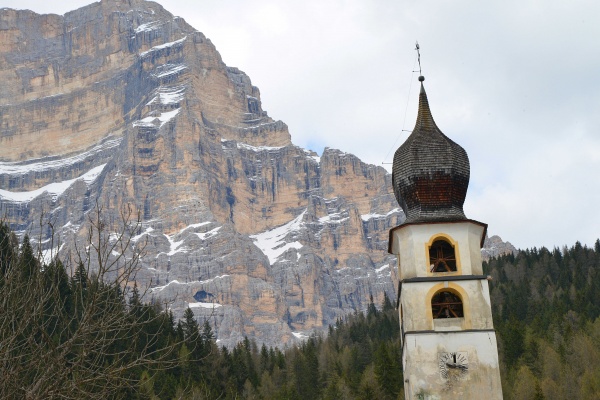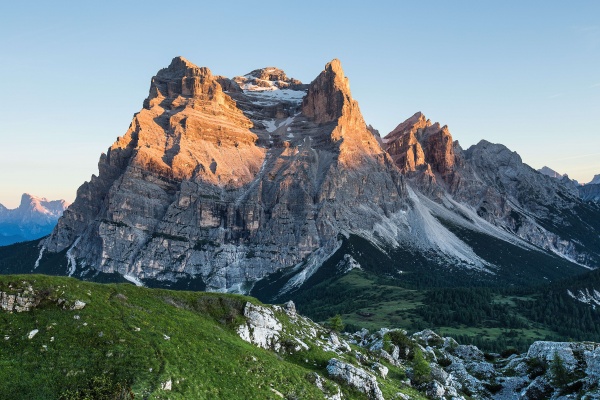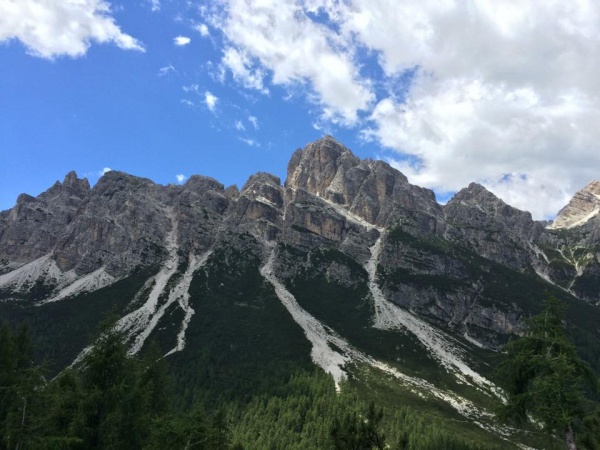The Dolomiti Bellunesi National Park was born in order to protect a territory of extraordinary value on account of its scenery and natural habitat. The presence of rare species and an exceptional variety of natural surroundings is due to its geographical location.The Park, in fact, is on the edge of the south eastern Alps, in very steep areas free from ice during the Ice Age glaciation: which ended 10 – 12, 000 years ago.
The Park is entirely situated in the Veneto region in the province of Belluno. Val di Zoldo is one of the municipalities of Belluno which has part of its territory included within the Dolomiti Bellunesi National Park.
From the Feltre summits to Schiara, the Park pushes northwards to touch both Agordino and Zoldano. In Val di Zoldo, Val Pramper contributes greatly to the beauty and attractiveness of the Park, with its typical Dolomites charm. The most striking panorama is the group from Prampèr and Mezzodì. The summits of Moschesin/Gardesana complete the picture. The high plateau of Pramperet and Prà della Vedova are particularly beautiful but so are the nearby valleys which are witness to an almost incontaminated nature. The No. 1 High Dolomites route (Alta via) runs along this territory which links up the lake of Braies to Belluno: coming from the Val Prampèr in the direction of the Tamèr - S.Sebastiano group heading towards Talvena passing right through Val Prampèr.
Main summits
Schiara (m 2565), Sass de Mura (m 2550), Talvéna (m 2542), Castello di Moschesin (m 2499), Prampèr (m 2409), Paviòne (m 2335), Spiz di Mezzodì – Spiz nord (m 2302).
Main rivers and streams
Cordévole, Mis, Caoràme, Stién, Falcìna, Ardo, Vescovà, Prampèra.
Municipalities concerned
The territories of 15 municipalities are included within the Park: Sovramonte, Pedavena, Feltre, Cesiomaggiore, San Gregorio nelle Alpi, Santa Giustina, Sospirolo, Sedico, Belluno, Ponte nelle Alpi, Longarone, Val di Zoldo, La Valle Agordina, Rivamonte and Gosaldo.
Flora
Over 1400 vascular species including some which are rare and of considerable bio-geographical interest.
Fauna
All the alpine species are well represented (ungulates, tetraonids, rapacious). 115 species of birds that nest in the Park, 20 species of reptiles and amphibians, at least 100 different species of butterfly. The population of deer, roe deer, chamois and mouflons is rich. Interesting invertebrate fauna with the presence of endemic species. Reported in recent years, the spontaneous return of specimens of lynx, wild cat and bear.
Emblem
It is the Campanula di Moretti (Campanula morettiana), a species endemic to the Dolomites, with beautiful brightly coloured violet flowers (from mid-July), which often grows on the damp rocks of the Park at an altitude of 1000 – 12000 metres.
Supervision
Responsibility of the State Forestry Corps (Corpo Forestale dello Stato) through the Territorial Coordination for the Environment (Coordinamento Territoriale per l'Ambiente). Command posts at Pian d'Avéna, Candàten, Longarone and Sospirolo.
Established
The Dolomiti Bellunesi National Park was established by a Ministerial Decree on 20th April 1990. The Park which manages the protected area came into being on 12th July 1993 with a decree signed by the President of the Italian Republic.
Area
Roughly 32.000 hectares, 16.000 of which make up 8 natural reserves which belong to the network of biogenetic reserves and managed by the Forestry Corps.

















